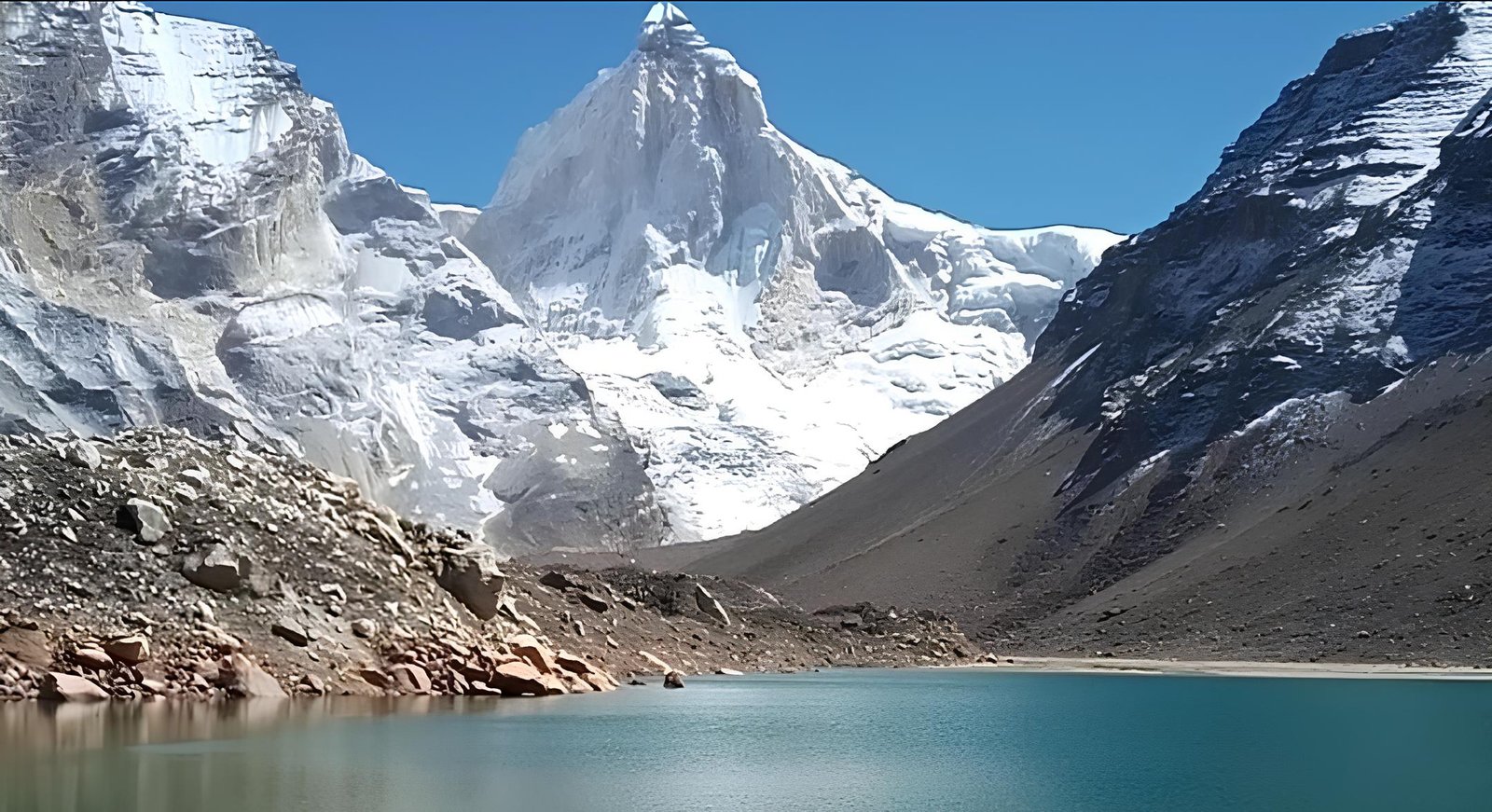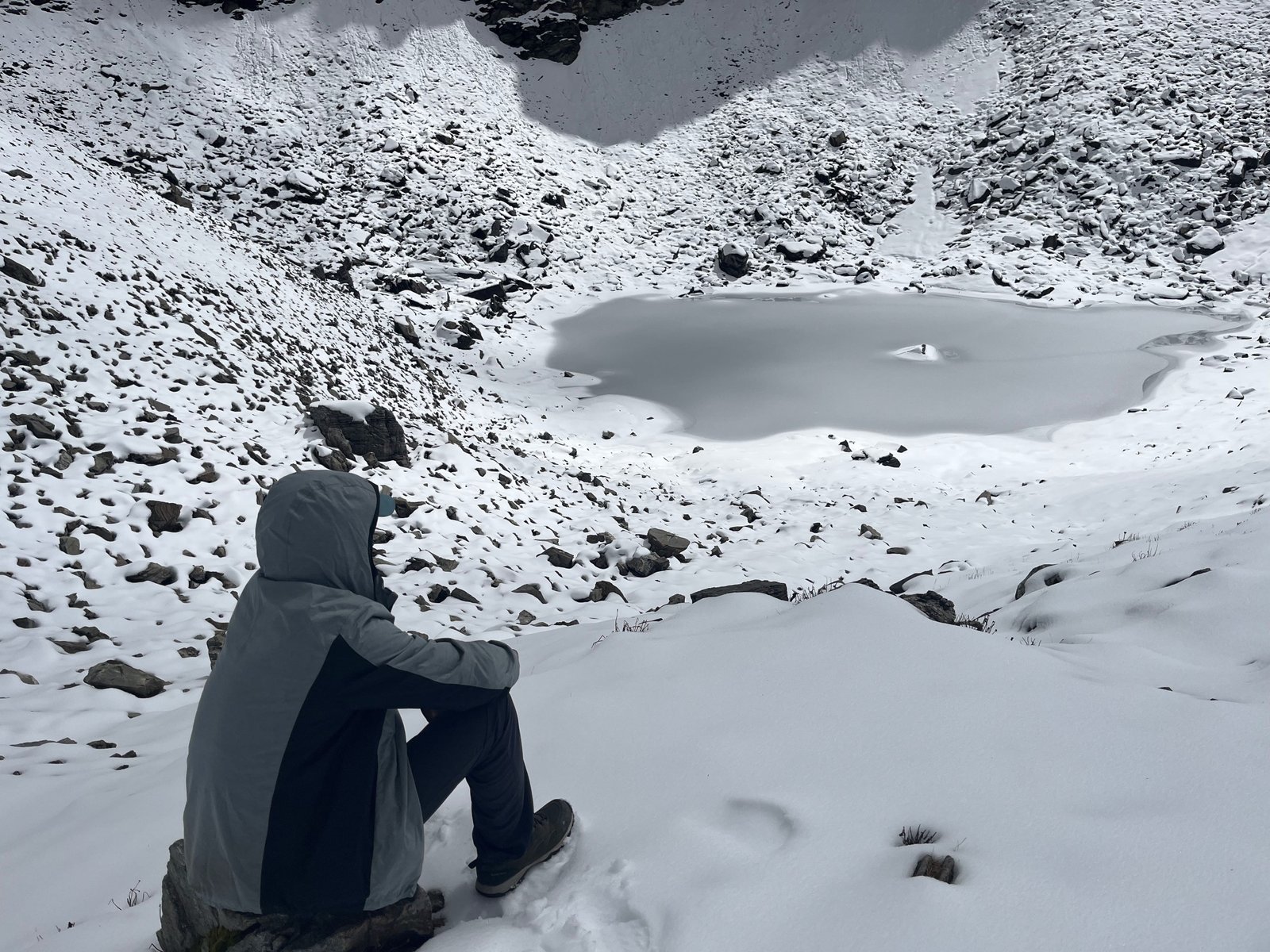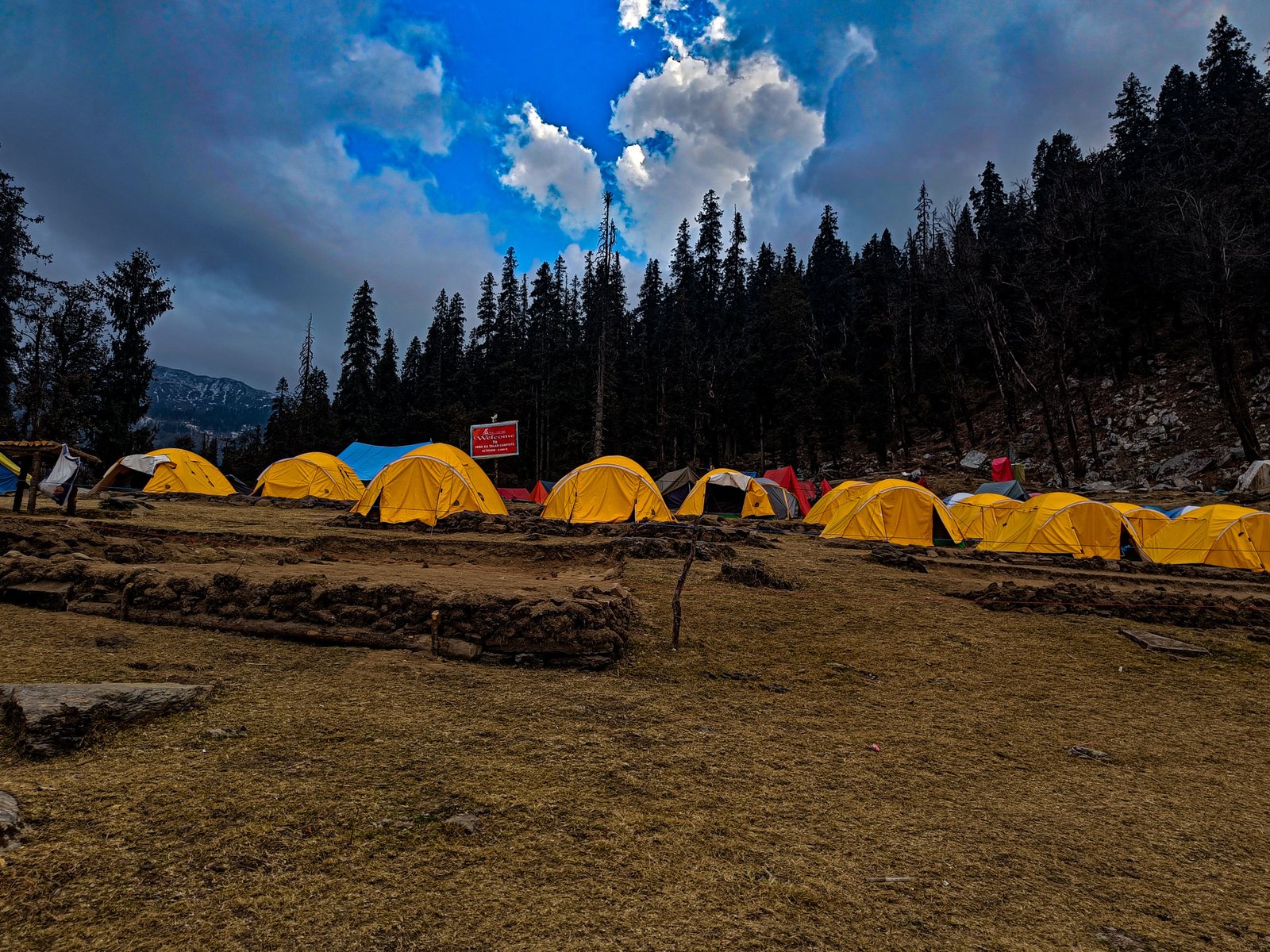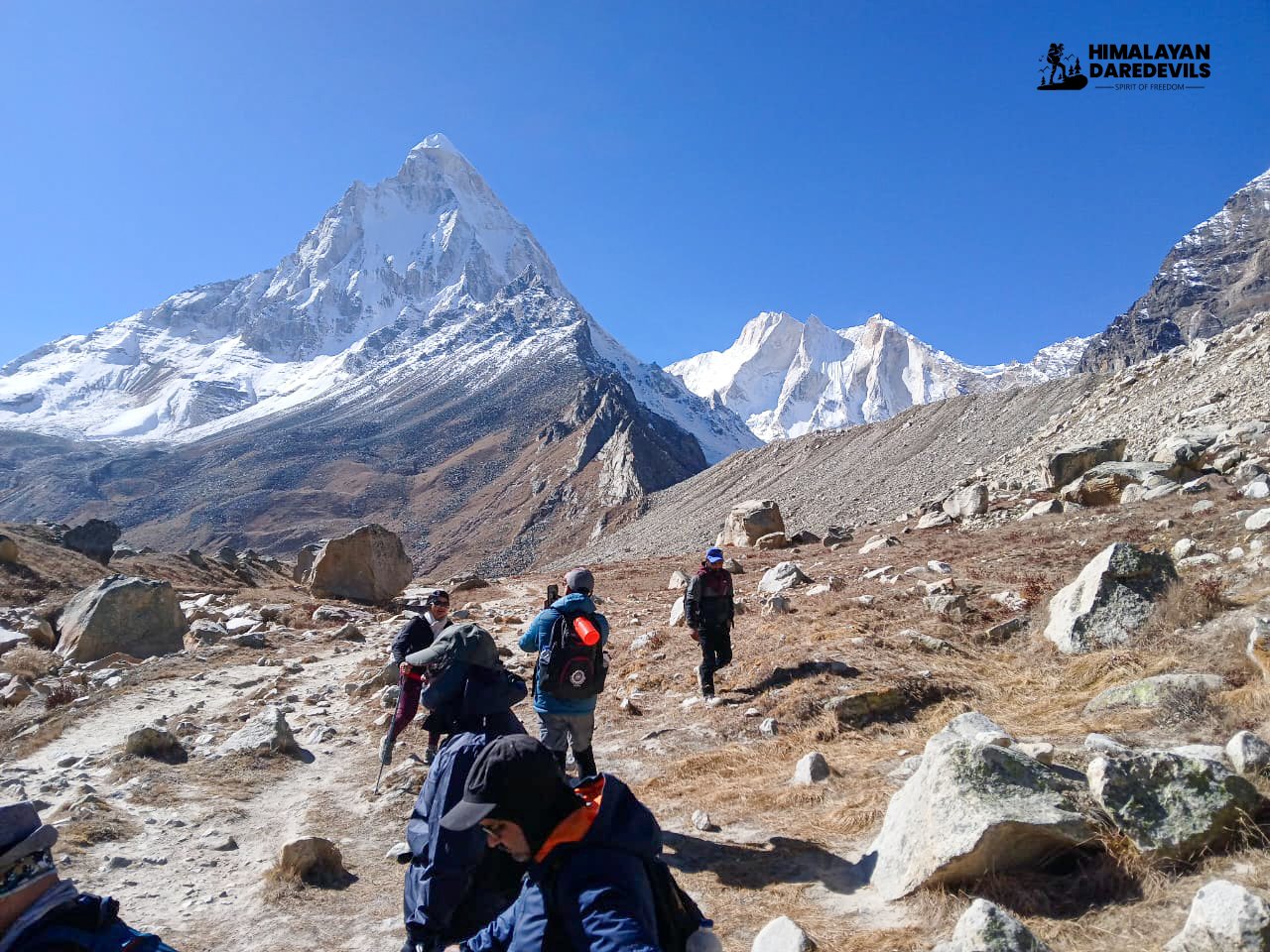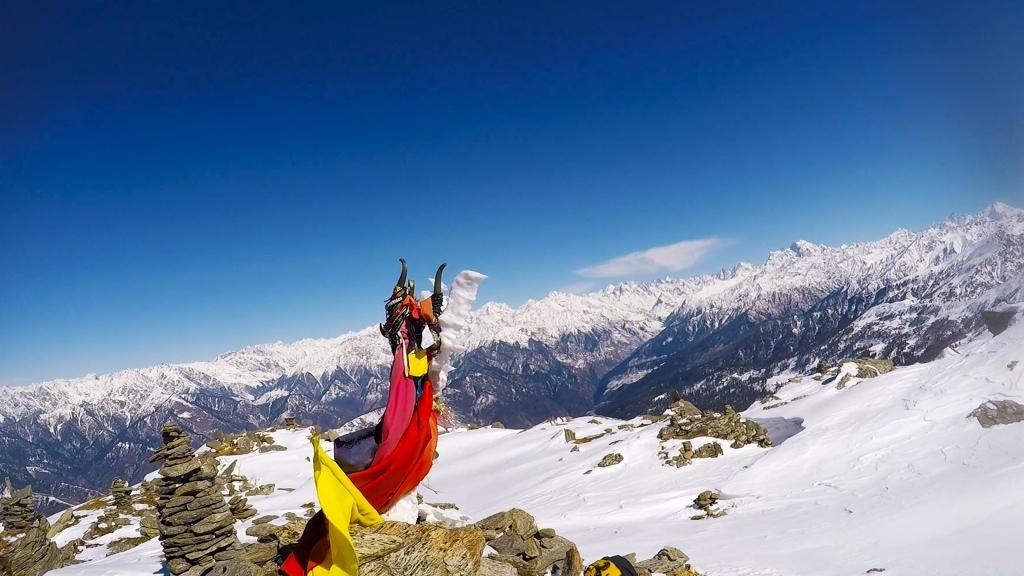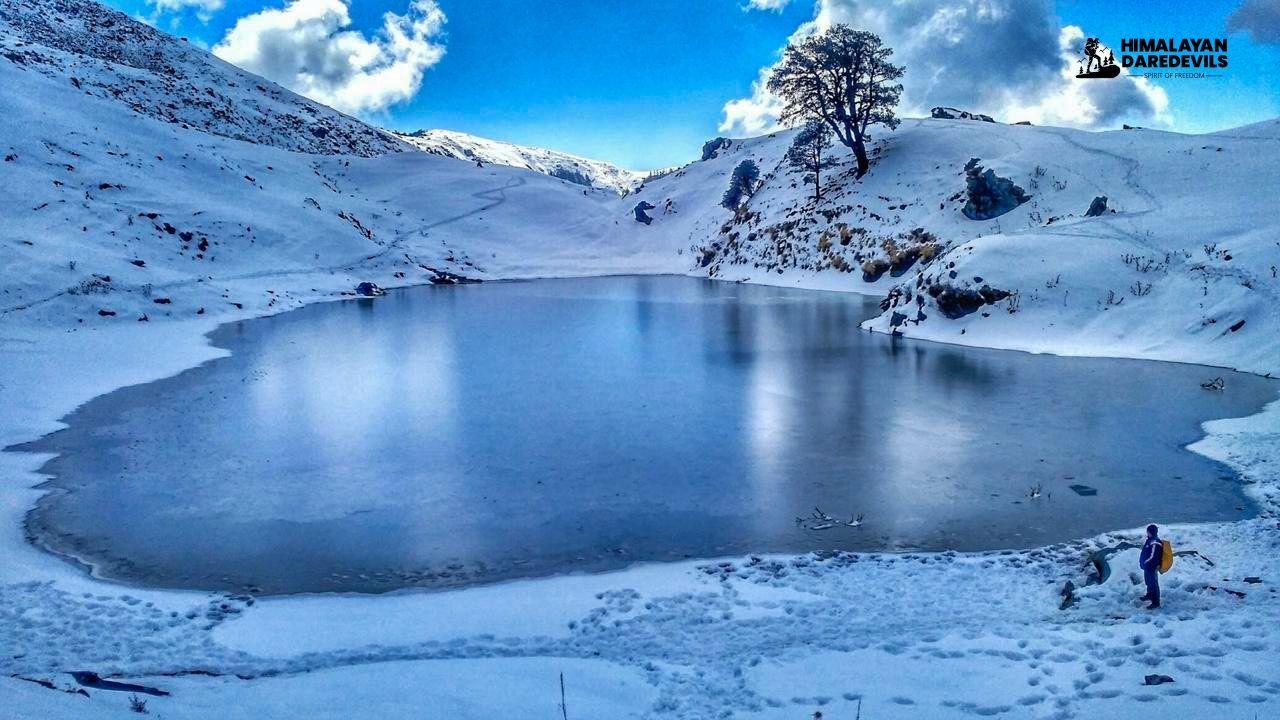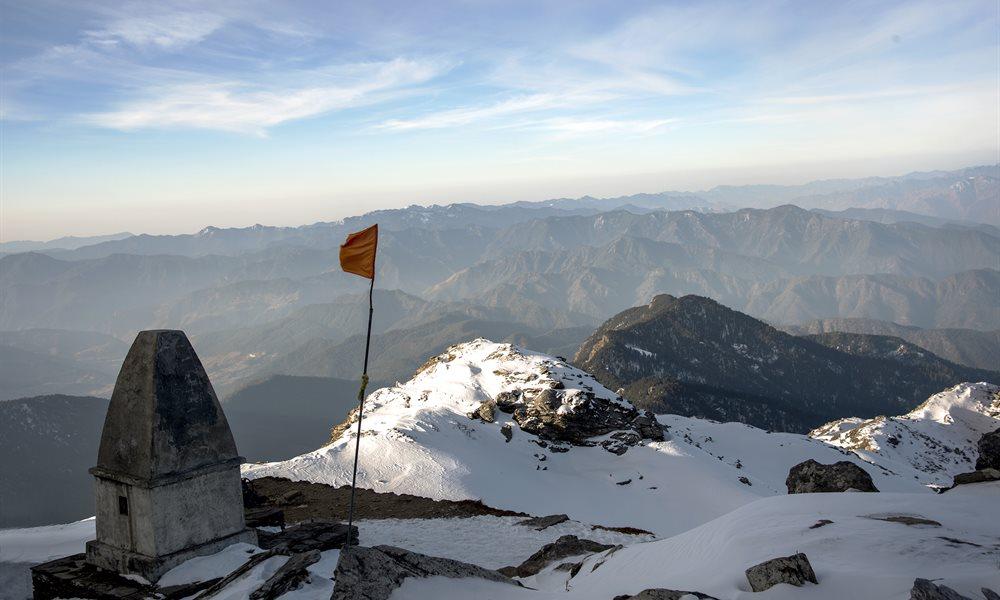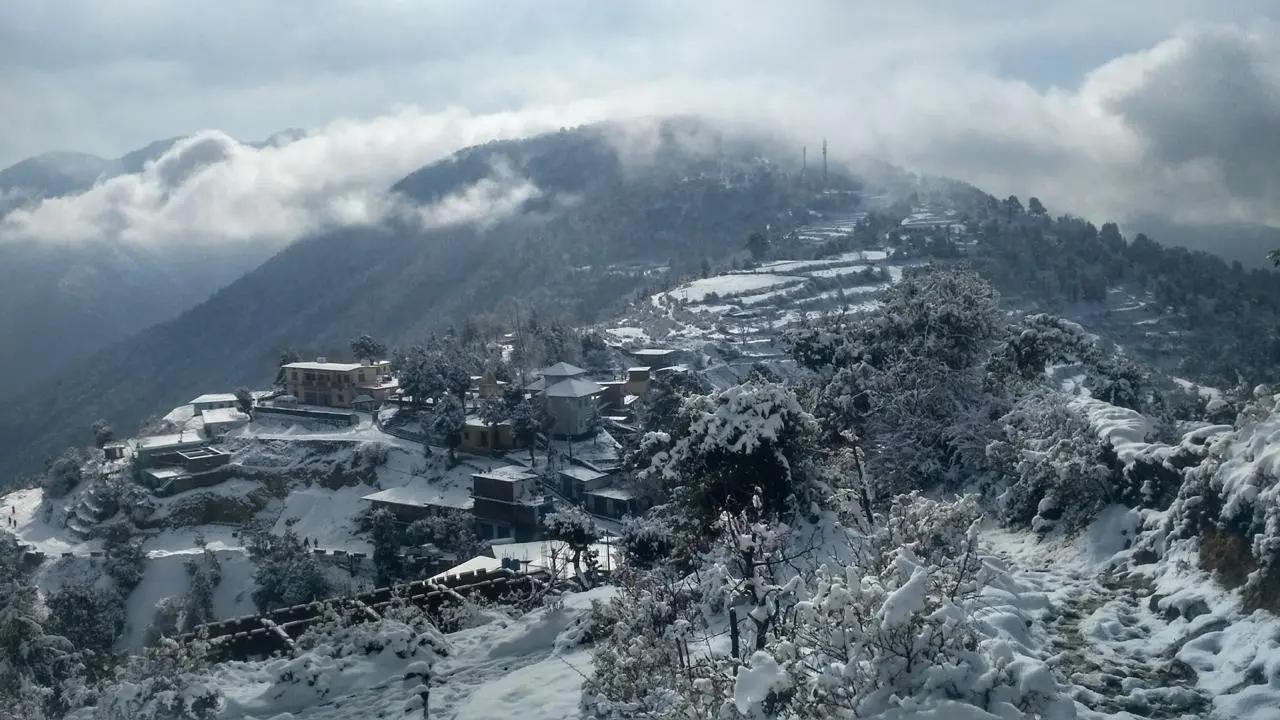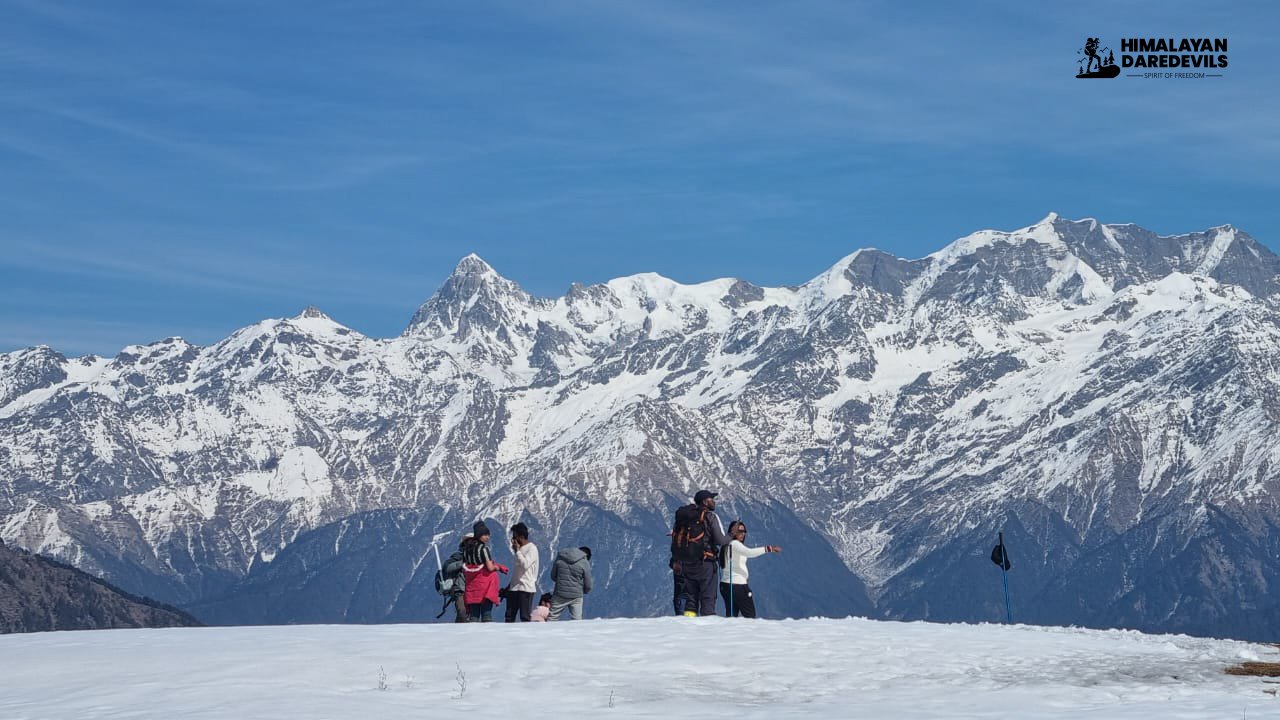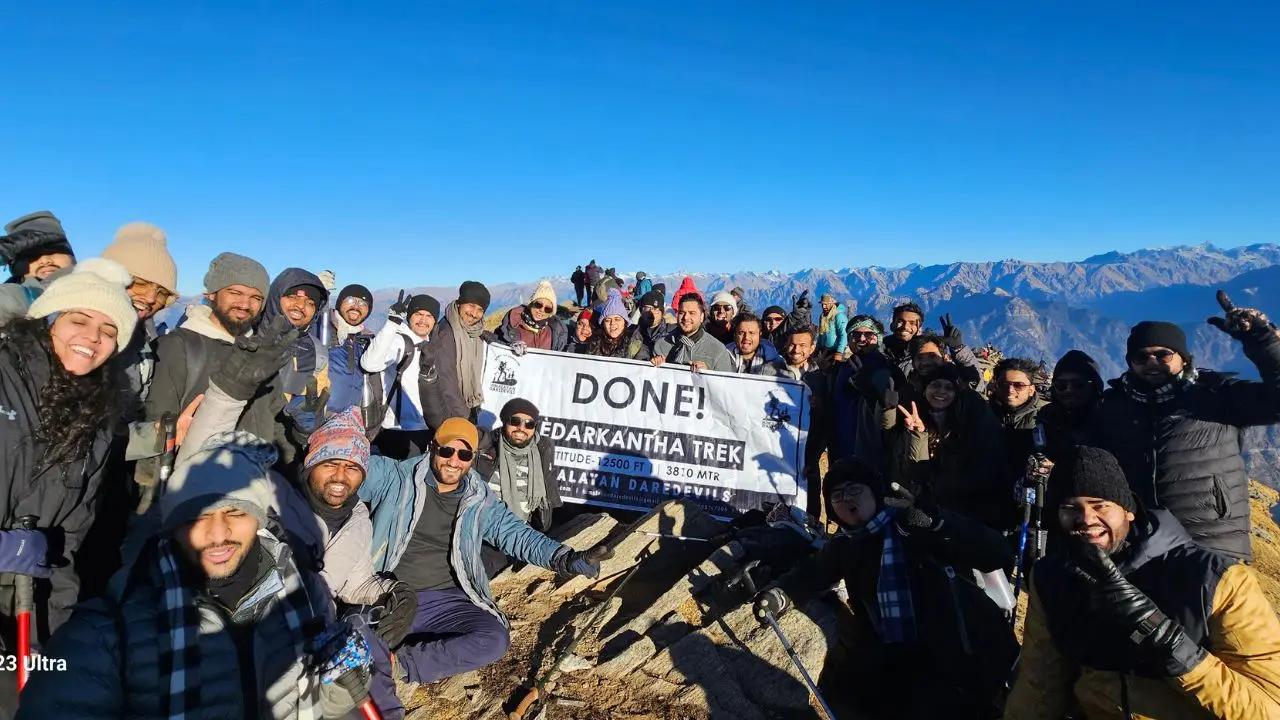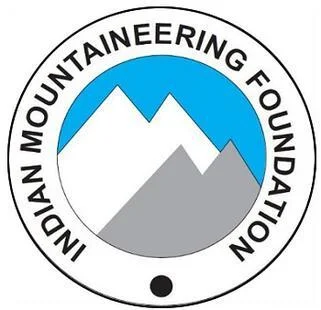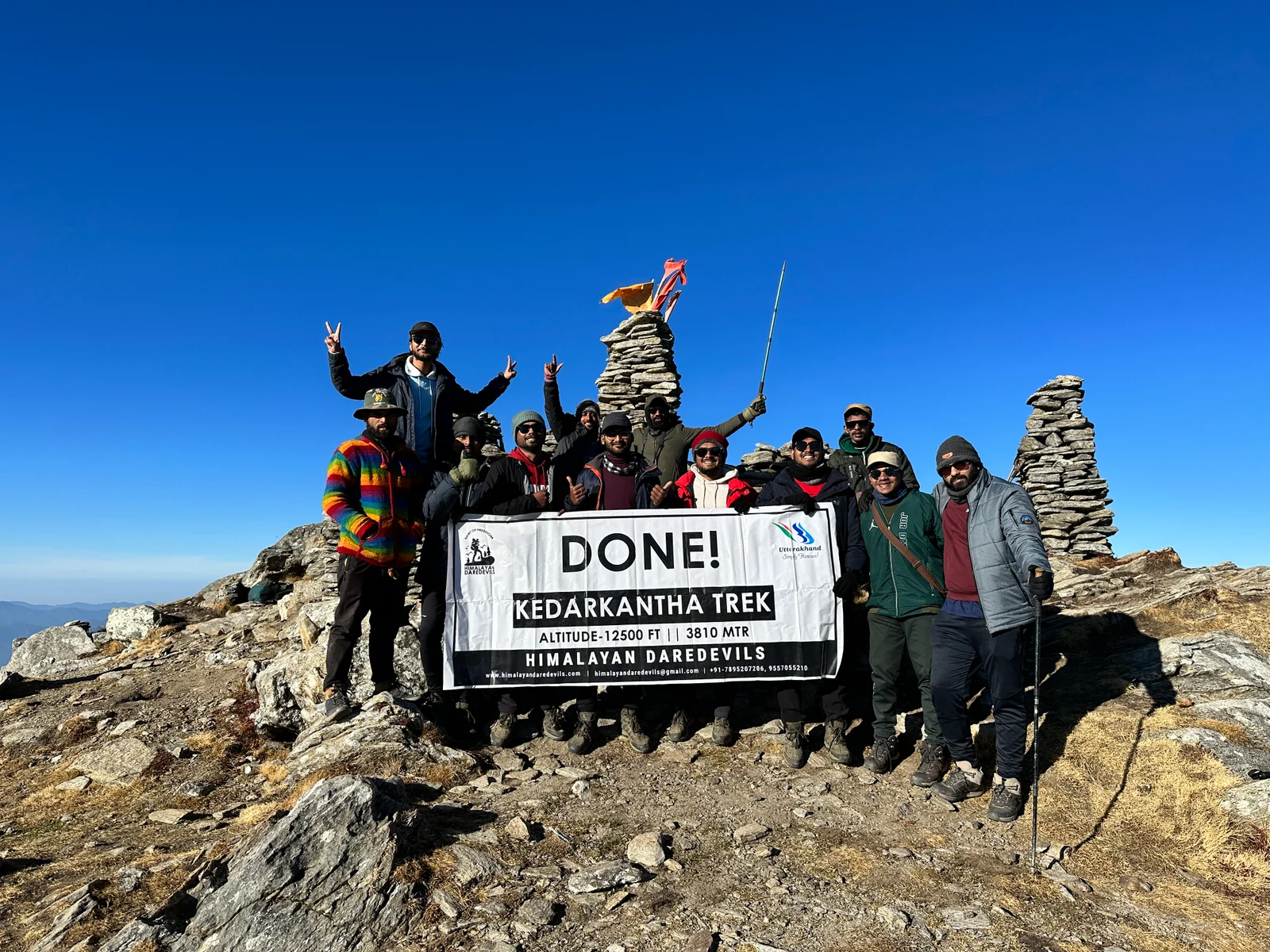07 December 2024
Among the various treks in the Indian Himalayas, the Kedartal trek helps you get up close to nature in the best way possible. The picturesque Kedartal trek begins from the state of Uttarakhand and is famous for its tranquility with beautiful views of mountain lakes, alpine meadows, and towers of mighty snow-clad peaks. Avalanches, swamps, and disembarked terrains are a few of the many challenges trekkers have to overcome that make this journey exhilarating. This blog covers the in-depth Kedartal trek route map, important trekking equipment, and the upcoming best to pack your bags for the stunning excursion in the heart of the Himalayas.
Kedartal Trek's Itinerary
Each day will be a surprise during the Kedartal trek. Here is the detailed itinerary which will give you the idea of the trek:
DAY 1- Reach Gangotri from Dehradun
Day one would ideally be spent traveling from Dehradun to Gangotri which is around 8-10 hours there of a road journey. It would be best to wake up early and start your journey from Dehradun to Rishikesh where this place is famous for Laxman Jhoola and its religious importance. Closer to Gangotri, you will also find rugged terrain with thick forests and rocky hills in the surrounding area.
After this, check in at the hotel to freshen up and go out for some local sightseeing too. You can visit the Gangotri Temple to pay your gratitude and respect to Goddess Ganges and the surrounding sacred calm before attempting a trek early the next morning. The planning encompasses spending this night in Gangotri to relax and acclimatize to the required height as preparatory to the start of the Kedartal trek.
DAY 2- Trek from Gangotri to Bhoj Kharak
When we come out of our sleeping bags on the very first morning of the Kedartal trek, the sound of the incessantly gushing Ganga and the sweet crisp mountain weather greets us. The time has come to embark on our first leg of the journey and our first leg will take us from Gangotri to Bhoj Kharak. To begin with, let's call it honorable because the quest starts with a preamble by crossing the Bhagirath River much earlier through the Bhairav Ghati Bridge. Before we take the trace of the trail further, please notice the GMVN lodge to your right which serves as a distinctive landmark. As we move slowly forward, the paths are populated with the devotees of the past and their ashrams.
As we tread north into the more elevated regions of the Himalayas the path too continues to rise. After covering around 200 meters, we turn to the right which is upward along another ashram. followed by a more wooded area which is steeper than the previous area. The highly marked footpath intersects beautiful oak, rhododendron, and pine woods which offers good views and the possibility of seeing some game. The degree of difficulty in the upward movement increases as we trek on but the head of Bhoj Kharak peak which is 9500 ft above sea level is indeed a morale booster. Later in the afternoon, we move on to our camps.
DAY 3- Trek from Bhok Kharak to Kedar Kharak
Compared to the previous day's trekking experience, moving from Bhoj Kharak to Kedar Kharak will be easy. It has one or two difficult parts here and there but basically, the slopes are gentle and wavy in a slithering manner. Kedar Kharak is just 4 kilometers away and the destination which is at an altitude of around 14,240 feet can be reached in about five hours.
Stepping outside the camp tent at Bhoj Kharak campsite makes one feel as though they are now at a high altitude since the elevation increases. After trekking for a kilometer and crossing the Bhoj forests, the trail moves beyond the timberline into the meadows which are very photogenic as the tall peak Bhrigupanth makes a dramatic appearance above thick clouds.
These next 2 kilometers can even be classified as leisurely strolling as steep climbs are now diminished. It is at this part when animals such as Bharal or blue sheep, Goral, Himalayan black bear, and many avians can be seen in their natural habitats at such high altitudes.
It’s getting colder as the altitude rises. be cautious as even a thin frost can form on the hones of stones in the streams. While crossing about two more water sources, you finally make it to Kedar Kharak.
The campsite is perched on a wide, dry, flat area that is surrounded by a few rocks and even a river. The trekking path for Day 4 is rocky where the stream starts.
DAY 4- Kedar Kharak to Kedartal and back to Kedar Kharak
On this day you will be excited because you will witness the emerald lake which makes all the aches seen during the treks of the previous days seem worth it. Why you need to start early on this stretch is because it's the hardest one of an already hard day. ‘Tal’ which is at an elevation of over 16,116 ft for about 5 km from Kedar Kharak can also be noted for being a steep trek across barren, rocky, and tree-less hills.
Though quite inexplicably dry, the landscape can at times be quite beautiful. The geography makes it difficult because there are more uphill movements than downhill ones and those have to be carried out in unreliable weather. This period has great chances for snow along with rainfall. This terrain can be best described as an intricately jumbled pile of rocks, with one or two small streams quite a distance away so that we have to carry enough water for ourselves. Some words are required explanation, ‘terrain’.
It is common to get disoriented and continue without realizing that one is moving in the wrong direction after some time. Such milestones, which are piles of stones, have almost been placed to explain to the trekkers where the right places are. Watch your step, as there are many loose rocks along the way. After 5-6 hours of trekking and getting to about 500 meters from the lake, you can see the immense Thalaysagar
DAY 5- Kedar Kharak to Gangotri
Set out for the descent to Gangotri, immediately after breakfast. Retrace your steps with joy as you get a last glimpse of the locations. Since most of the trail is descending, it should take less time to reach. Take note of the loose rocks along the trail. With this trek, your journey of Kedartal will come to an end. Enjoy and savor the views of Kedar Kharak while going back to Gangitri
DAY 6- From Gangotri to Dehradun
Gangotri is around 242 km from Dehradun. The trip takes a little under 8 hours or a little more depending on the road conditions and the number of rest breaks taken en route. The Gangotri trip offers many views of the Himalayas, dense green valleys, and the Ganges River. The mountains start steep, but as you make your way down towards the town of Uttarkashi, a rest area, the mountains level out.
Moving forward in this trip, you observe the beginning of development since the mountains now disappear, and floodplains, fields, forests, etc. come into the picture. Then, the trip goes through Rishikesh, the holy town by Ganga where one can see some temples and ghats by the riverside. From Rishikesh onwards, it is downhill for the stretch of road that runs up to Dehradun through the foothills. Finally, the reader is welcome by the peaceful environment that the city of Dehradun provides which signifies the completion of the wonderful journey.
Best Time to Visit Kedartal Trek
The summer months of May and June and early autumn, September to October are theoretically the most appropriate months for the Kedartal Trek. Primarily September and October are the months where the weather is most balanced as temperatures are manageable and the chances of rain are minimal.
Such conditions are rare as most monsoon seasons in India experience severe precipitation that can easily make the trails of Kedartal exceptionally slippery and unsafe. Likewise, winter causes heavy snow that gives you majestic mountains and beautiful green meadows. Such weather can also hamper the experience hence the trek must be avoided in the entire winter and monsoon seasons.
Trekking Essentials for Kedartal Trek
Trekking Footwear: Well-constructed trekking shoes with good ankle support are essential in order to traverse rocky and uneven surfaces as well as slippery surfaces. Remember to invest in waterproof ones for wet weather conditions.
Clothing: The weather in the Himalayas can be highly unpredictable. Therefore, take a thin base layer that drags moisture away from your skin, an insulating mid-layer as well as an outer shell that is waterproof and windproof.
Striding Poles: These give added stability on steep and rocky sections, lessening stress on the knees as well as assisting in maintaining balance while moving across rough terrains.
Food and water: During the trek, have a good water bottle or a hydration system with water purification tablets. It is crucial that a person be hydrated even in higher altitudes such as this in an effort to limit altitude sickness as well as dehydration.
Key Highlights of the Kedartal trek
Trekking enthusiasts must go to Kedartal Trek as it provides both the beauty of nature and the thrill of adventure that has never been offered before. Some of the major attractions are the impressive Kedartal Lake, a high-altitude glacial lake secured by the towering peaks of Mount Thalaya Sagar and Kedar Peak which is known to offer stunning views from all directions. The trek itself goes through dense forests, high-altitude meadows, and rugged terrains, making for a magnificent combination. The trail also offers sights of close wildlife as well as a spiritual feel. The Kedartal is an experience that can’t be forgotten easily, the unpredictable weather is the cherry on top.
Challenges and Tips for Trekking the Kedartal Trek
High Altitude and Acclimatization: It should be noted that the Kedartal Trek crosses an altitude beyond 4,000 meters, acclimatization measures are highly recommended.
Tip: Try not to rush the trek to adjust to thinner air, Take regular acclimatization breaks, and drink lots of fluids.
Rugged Terrain: The trail has steep ascents, and the path has rocks and gravel or some loose gravel which can be strenuous.
Tip: Proper trekking boots to protect the ankles and trekking poles to help with balance and minimal impact on the knees.
Unpredictable Weather: Weather in the region can get unpredictable – it could start raining or become chilly all of a sudden, especially in the mountains.
Tip: Expect rain and cold weather while on the trek so wear warm clothing and carry a waterproof jacket to stay dry and cozy during the trek.
Conclusion
Trek also brings a fitting climax, the Kedartal Trek which is both emotionally satisfying and physically tiring for those who have come to enjoy the idyllic wilderness of Uttarakhand that comes along with lush green meadows, a rough and tough landscape roughs along with snow-capped mountains in the backdrop. The trek may have its ugliness as it has a wide-angle view of the topography and climate changes, but gliomas workers in the field of medicine will always remember the experience as a memorable sight.
Organizing this adventure is a work of art by companies like Himalayan Daredevils, who cater for every aspect of the journey including the level of guided support that trekkers shall require. The Kedartal trek though extremely tiresome is an exceptional journey that anyone would ease to participate in after all the hard work in preparation has already been done.
